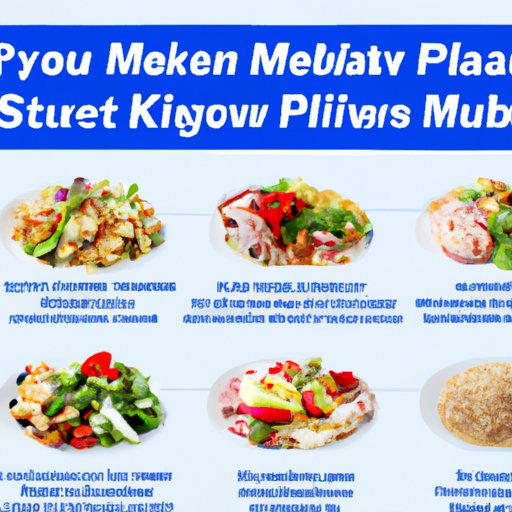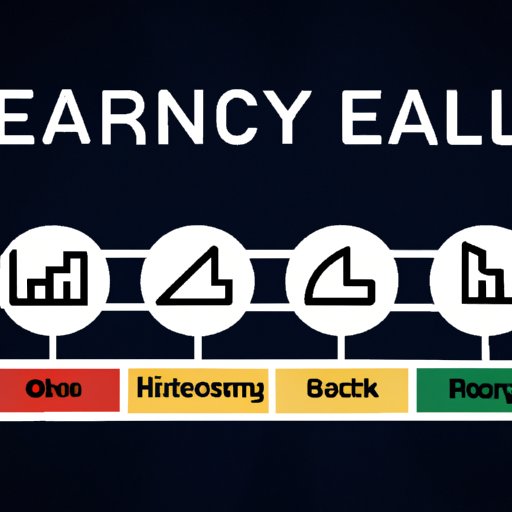Introduction
When it comes to losing weight, one of the most important things to consider is what you’re eating. How much and how often you eat can make a big difference in your success. Some people swear by eating small meals throughout the day, while others believe that less frequent meals are best. So, how often should you be eating to lose weight?

Overview of Weight Loss and Eating Frequency
Weight loss isn’t as simple as “calories in, calories out.” While it is true that reducing your caloric intake can lead to weight loss, it’s also important to consider other factors such as the type of foods you’re eating, the timing of your meals, and how often you’re eating.
Studies have found that eating more frequent meals can have a positive effect on weight loss. In one study, participants who ate three meals and two snacks per day lost more weight than those who ate three larger meals. Another study found that eating five or six smaller meals per day was associated with greater fat loss than eating three larger meals.
Benefits of Eating Smaller, More Frequent Meals
The benefits of eating smaller, more frequent meals include:
- Increased satiety: Eating smaller meals more frequently can help keep you feeling full and satisfied between meals.
- Better digestion: Eating smaller meals can help reduce bloating and indigestion.
- Improved blood sugar control: Eating more frequent meals can help regulate your blood sugar levels, which is important for weight loss.
- Higher energy levels: Eating smaller, more balanced meals can provide your body with the energy it needs to stay active and alert throughout the day.
Calculating Your Ideal Calorie Intake for Weight Loss
The first step to creating an effective eating plan for weight loss is to calculate your ideal calorie intake. To do this, you’ll need to determine your current weight, activity level, and weight loss goals.
Considerations When Calculating Calorie Intake
When calculating your ideal calorie intake, consider the following:
- Your current weight: This will give you an idea of how many calories you need to maintain your current weight.
- Your activity level: If you’re very active, you may need to consume more calories than someone who is sedentary.
- Your weight loss goals: Aim to create a calorie deficit of 500-1000 calories per day in order to lose weight.
Sample Calorie Counts for Different Weight Loss Goals
Here are some sample calorie counts for different weight loss goals:
- Maintaining weight: 1500-1800 calories per day
- Moderate weight loss: 1200-1500 calories per day
- Rapid weight loss: 1000-1200 calories per day
It’s important to note that these are just general guidelines. Everyone’s calorie needs are different, so it’s best to consult a doctor or nutritionist to determine your ideal calorie intake.

How to Structure Your Meals for Maximum Weight Loss
Once you’ve calculated your ideal calorie intake, the next step is to structure your meals for maximum weight loss. This means focusing on macronutrient balance, timing of meals, and portion sizes.
Macronutrient Balance
Achieving the right macronutrient balance is essential for successful weight loss. Aim to get a mix of lean proteins, complex carbohydrates, and healthy fats at each meal. This will help keep you feeling full and energized throughout the day.
Timing of Meals
It’s also important to pay attention to when you’re eating. Eating too late in the evening can lead to increased hunger and cravings the next day, so aim to finish your last meal at least two hours before bedtime. Additionally, try to leave at least three hours between meals to give your body time to digest.

Strategies to Keep Yourself on Track with Eating Frequency
Staying consistent with your meal plan can be difficult, especially if you’re busy or have a hectic lifestyle. Here are some strategies to help keep yourself on track with your eating frequency:
Meal Planning
Meal planning is one of the best ways to ensure that you’re sticking to your eating frequency. Take some time each week to plan out your meals and snacks for the upcoming days. This will help ensure that you’re getting the right amount of calories and nutrients each day.
Tracking Tools
There are a variety of tracking tools available that can help you stay on top of your calorie intake and eating frequency. Apps like MyFitnessPal and Lose It! allow you to easily track your meals and snacks, so you can stay on top of your goals.
Setting Reminders
If you’re prone to skipping meals, setting reminders can be a helpful way to stay on track. You can set reminders on your phone or computer to remind you when it’s time to eat.
Healthy Snacks to Help You Reach Your Weight Loss Goals
Snacking can be a great way to increase your eating frequency and stay on track with your weight loss goals. However, not all snacks are created equal. Here are some healthy snack ideas that will help you reach your goals:
Nutrient-Dense Snacks
Look for snacks that are high in protein, fiber, and other essential nutrients. Some good options include nuts and seeds, yogurt, hard-boiled eggs, and fruit.
Low-Calorie Snacks
If you’re looking for a low-calorie snack, opt for something that’s under 200 calories. Some good options include air-popped popcorn, a piece of fruit, or a handful of nuts.
What to Do When You Feel Hungry Between Meals
It’s normal to feel hungry between meals, especially if you’re trying to lose weight. Here are some tips for dealing with hunger between meals:
Drink Water
Sometimes thirst can be mistaken for hunger, so it’s important to stay hydrated throughout the day. Drinking a glass of water can help curb your appetite and reduce feelings of hunger.
Mindful Eating
Before reaching for a snack, take a few moments to check in with your body. Ask yourself why you’re feeling hungry and if you really need to eat. This can help you become more mindful of your eating habits and prevent mindless snacking.
Move Around
If you’re feeling hungry between meals, try going for a walk or doing some light stretching. Moving around can help take your mind off food and reduce feelings of hunger.
Conclusion
Eating more frequently has been linked to improved weight loss results. The key is to find an eating plan that works for you and your lifestyle. Consider calculating your ideal calorie intake and structuring your meals for maximum weight loss. Incorporate healthy snacks into your eating plan and use strategies like meal planning and tracking tools to help you stay on track. Finally, when you’re feeling hungry between meals, drink water, practice mindful eating, and move around.
By following these tips, you’ll be able to find an eating frequency that works for you and your weight loss goals.
(Note: Is this article not meeting your expectations? Do you have knowledge or insights to share? Unlock new opportunities and expand your reach by joining our authors team. Click Registration to join us and share your expertise with our readers.)
